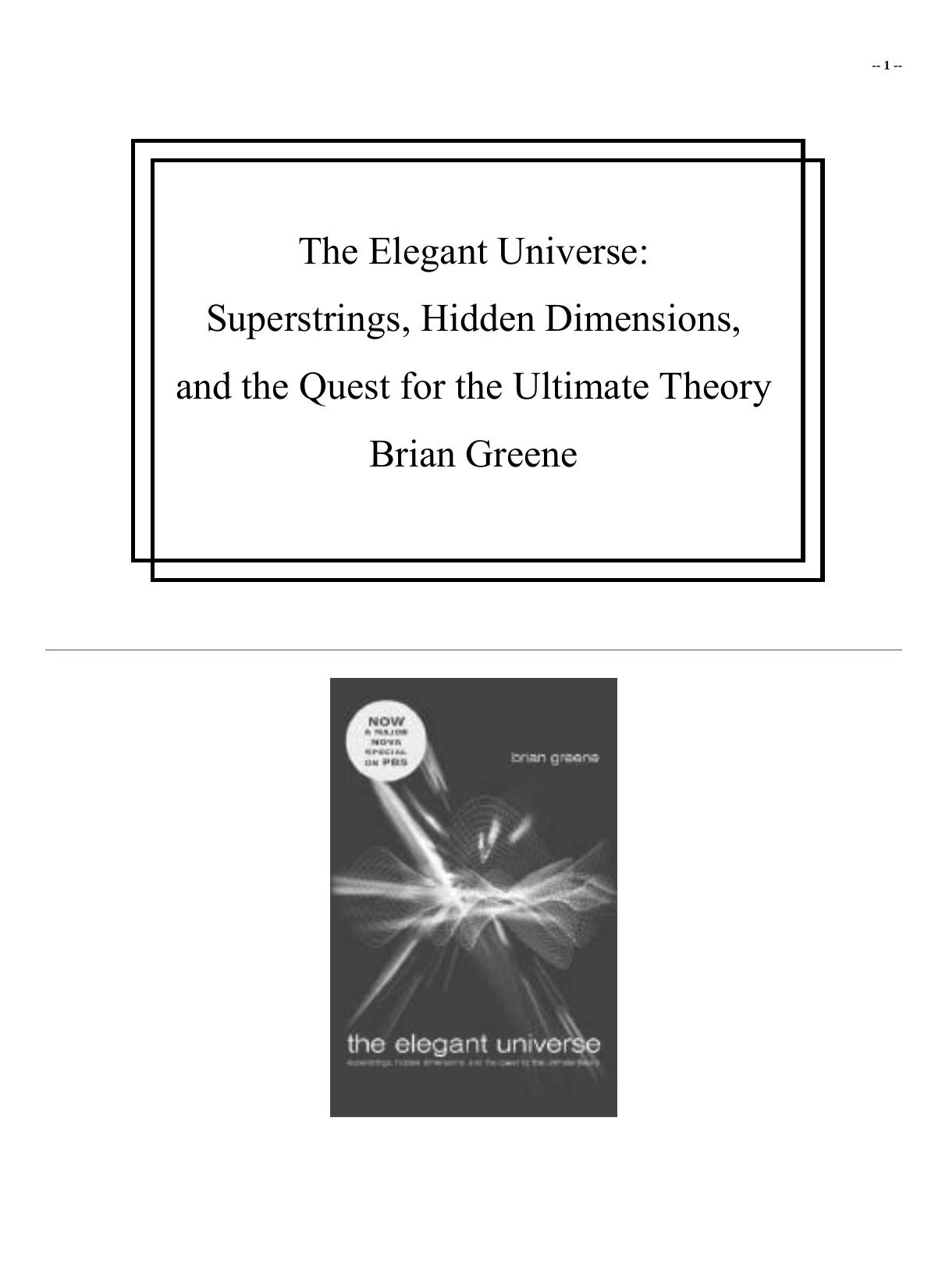The Elegant Universe by Brian Greene

Author:Brian Greene
Language: eng
Format: mobi, epub, pdf
Tags: Science
ISBN: 9781446477779
Publisher: Random House
Published: 2011-05-31T10:00:00+00:00
Figure 9.1 A doughnut, or torus, and its multihandled cousins.
You might think that the number of holes in the curled-up Planck-sized dimensions—mountaintop physics par excellence—has now kicked an experimentally testable stone down to accessible energies. After all, experimentalists can establish—in fact, already have established—the number of particle families: 3. Unfortunately, the number of holes contained in each of the tens of thousands of known Calabi-Yau shapes spans a wide range. Some have 3. But others have 4, 5, 25, and so on—some even have as many as 480 holes. The problem is that at present no one knows how to deduce from the equations of string theory which of the Calabi-Yau shapes constitutes the extra spatial dimensions. If we could find the principle that allows the selection of one Calabi-Yau shape from the numerous possibilities, then indeed a stone from the mountaintop would go tumbling down into the experimentalists' camp. If the particular Calabi-Yau shape singled out by the equations of the theory were to have three holes, we would have found an impressive postdiction from string theory explaining a known feature of the world that is otherwise completely mysterious. But finding the principle for choosing among Calabi-Yau shapes is a problem that as yet remains unsolved. Nevertheless—and this is the important point—we see that string theory provides the potential for answering this basic puzzle of particle physics, and this in itself is substantial progress.
The number of families is but one experimental consequence of the geometrical form of the extra dimensions. Through their effect on possible patterns of string vibrations, other consequences of the extra dimensions include the detailed properties of the force and matter particles. As one primary example, subsequent work by Strominger and Witten showed that the masses of the particles in each family depend upon—hang on, this is a bit tricky—the way in which the boundaries of the various multidimensional holes in the Calabi-Yau shape intersect and overlap with one another. It's hard to visualize, but the idea is that as strings vibrate through the extra curled-up dimensions, the precise arrangement of the various holes and the way in which the Calabi-Yau shape folds around them has a direct impact on the possible resonant patterns of vibration. Although the details get difficult to follow and are really not all that essential, what is important is that, as with the number of families, string theory can provide us with a framework for answering questions—such as why the electron and other particles have the masses they do—on which previous theories are completely silent. Once again, though, carrying through with such calculations requires that we know which Calabi-Yau space to take for the extra dimensions.
The preceding discussion gives some idea of how string theory may one day explain the properties of the matter particles recorded in Table 1.1. String theorists believe that a similar story will one day also explain the properties of the messenger particles of the fundamental forces, listed in Table 1.2. That is, as strings twist and
Download
The Elegant Universe by Brian Greene.epub
The Elegant Universe by Brian Greene.pdf
This site does not store any files on its server. We only index and link to content provided by other sites. Please contact the content providers to delete copyright contents if any and email us, we'll remove relevant links or contents immediately.
| Atomic & Nuclear Physics | Particle Physics |
The Complete Stick Figure Physics Tutorials by Allen Sarah(7307)
Secrets of Antigravity Propulsion: Tesla, UFOs, and Classified Aerospace Technology by Ph.D. Paul A. Laviolette(5309)
Thing Explainer by Randall Munroe(3877)
The River of Consciousness by Oliver Sacks(3539)
The Order of Time by Carlo Rovelli(3145)
How To by Randall Munroe(3034)
A Brief History of Time by Stephen Hawking(2960)
I Live in the Future & Here's How It Works by Nick Bilton(2935)
The Great Unknown by Marcus du Sautoy(2647)
What If?: Serious Scientific Answers to Absurd Hypothetical Questions by Randall Munroe(2637)
Midnight in Chernobyl by Adam Higginbotham(2483)
Blockchain: Ultimate Step By Step Guide To Understanding Blockchain Technology, Bitcoin Creation, and the future of Money (Novice to Expert) by Keizer Söze(2445)
Networks: An Introduction by Newman Mark(2360)
The Meaning of it All by Richard Feynman(2300)
Easy Electronics by Charles Platt(2281)
The Tao of Physics by Fritjof Capra(2229)
Midnight in Chernobyl: The Untold Story of the World's Greatest Nuclear Disaster by Adam Higginbotham(2177)
When by Daniel H Pink(2083)
Introducing Relativity by Bruce Bassett(2076)
